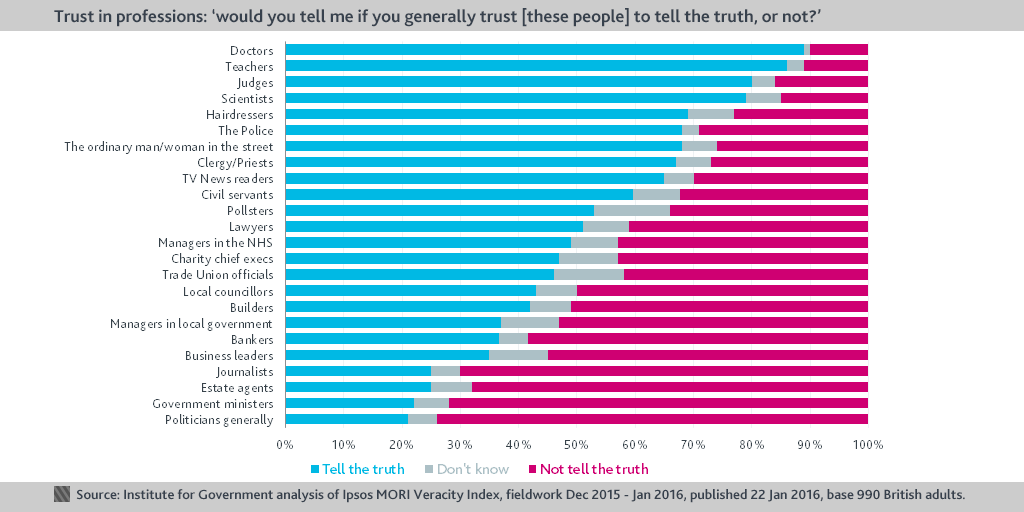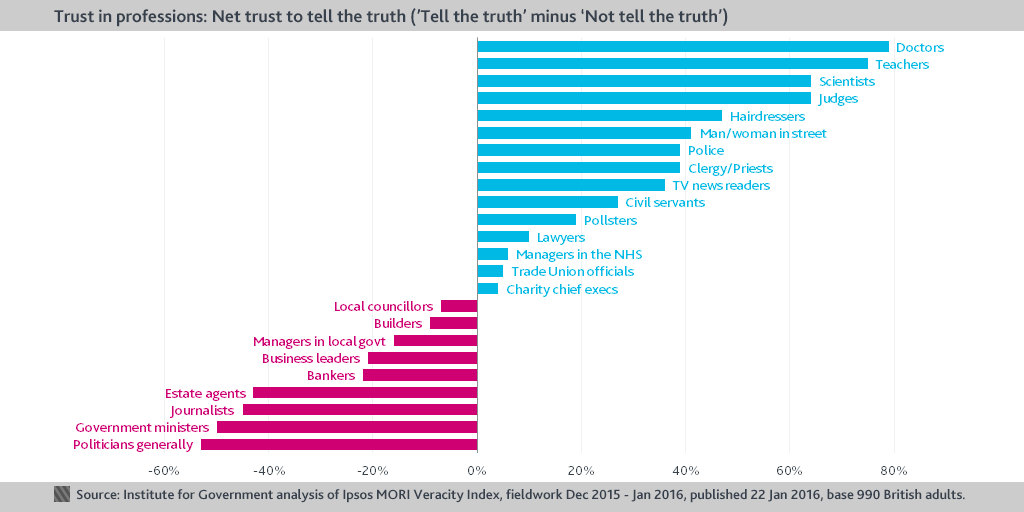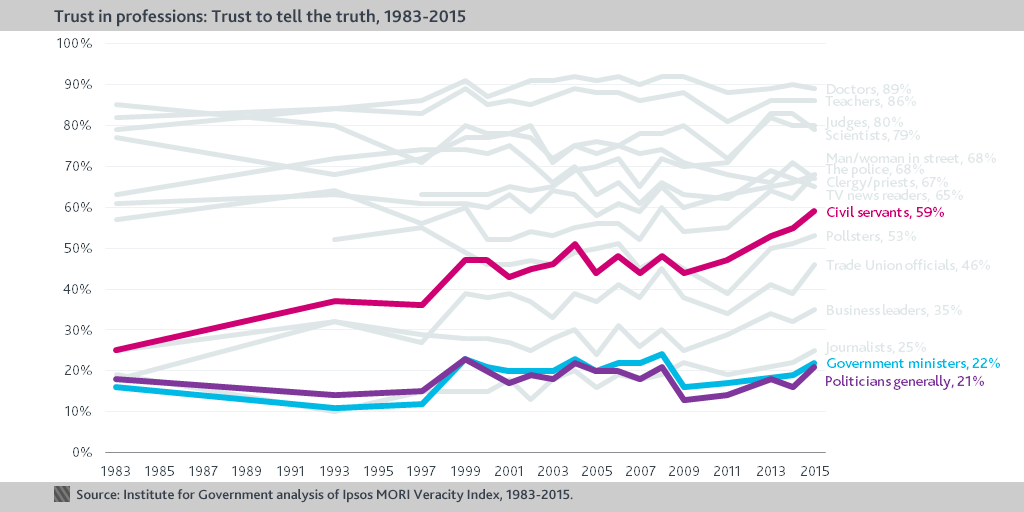Ipsos MORI’s latest Veracity Index, which looks at public trust in a wide variety of professions, was published last week. Gavin Freeguard looks at how trustworthy poll respondents think the Civil Service is, and how this has changed over time.
Pollsters Ipsos MORI have been recording public trust in a number of professions, including the Civil Service, since 1983 – the latest results, based on fieldwork from December 2015 to January 2016, were published on 22 January.
59% of respondents trust civil servants to tell the truth.
Of those polled, 59% trust civil servants to tell the truth, compared to 32% who do not. This makes civil servants the tenth most trusted group in the survey, behind others including doctors (top of the survey, with 89% trust), teachers (86%), and judges (80%). Civil servants are also less trusted than the ordinary man or woman in the street (68%).
However, civil servants are more trusted than many others working in government or public services. Only 49% trust managers in the NHS to tell the truth, 43% trust local councillors and 37% trust managers in local government. At the very bottom of the table are politicians, trusted by 21% of respondents – one point less than government ministers. These political categories are just short of estate agents and journalists on 25% – who are themselves ten percentage points behind the next least-trusted category, business leaders (35%).
Some other surveys find a lower level of trust in civil servants: the YouGov Trust Tracker found trust in senior civil servants to be 19% in November 2014, around the same score as politicians and journalists. However, in our analysis of last year’s Veracity Index, we noted that some international studies were much closer to the Ipsos MORI figures.
Net trust in civil servants stands at 27%; net trust in government ministers is minus 50%.
Unsurprisingly, calculating net trust – the percentage of respondents that trust a group to tell the truth, minus the percentage that do not – gives similar results. Civil servants are one of fifteen groups to record net positive results, on 27%. Doctors again lead, on 79%. The only other ‘political’ groups to record net positives are managers in the NHS (6%), trade union officials (5%) and – perhaps amusingly given recent experiences – pollsters (19%).
Local councillors (-7%), managers in local government (-16%), ministers (-50%) and politicians (-53%) all record negative net trust ratings.
The percentage of people trusting civil servants to tell the truth has risen over the last year.
Trust in civil servants to tell the truth has risen by four points over the last year, from 55% to 59%. This continues a trend followed since the Veracity Index was first conducted: in 1983, trust in civil servants stood at just 25%. It rose from 36% in 1997 to 47% in 1999, and has risen with every survey since 2009.
Although there is no definitive explanation for this rise, Bobby Duffy of Ipsos MORI suggested, in 2013, that it may be due to:
- ‘the obverse of low trust in political groups’ – trust in politicians has remained consistently low
- A shift in cultural context from Yes, Minister to The Thick of It, where civil servants are portrayed as ‘neutral, if sometimes inept’ with more political ‘advisers and communications experts pulling the strings’
- An association with ‘the optimism around public services in the late 1990s and early 2000s’.
Cabinet Secretary Sir Jeremy Heywood has called the rising figures ‘encouraging – particularly when trust in other institutions has been declining’ (although as the chart above shows, there isn’t a clear decline elsewhere). He also noted that further increases ‘depend on our delivering on our reform priorities, which will help to deliver consistently excellent public services and a modern, efficient, inclusive and highly skilled Civil Service’. We still await the publication of the new Single Departmental Plans, which will outline what these priorities will be for each department. Publication was scheduled for January: even if the plans are not published in the next few days, we trust they will be published soon.


